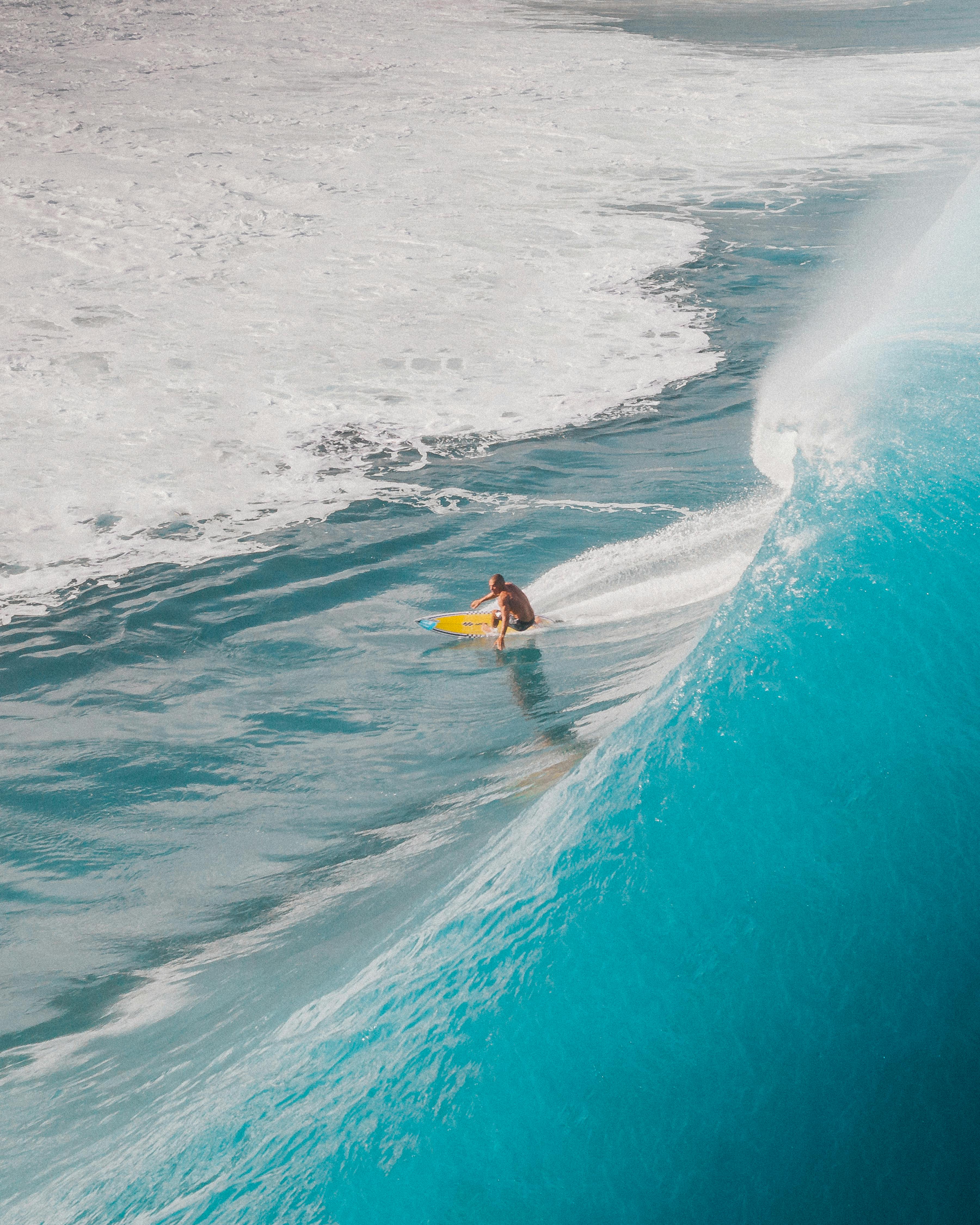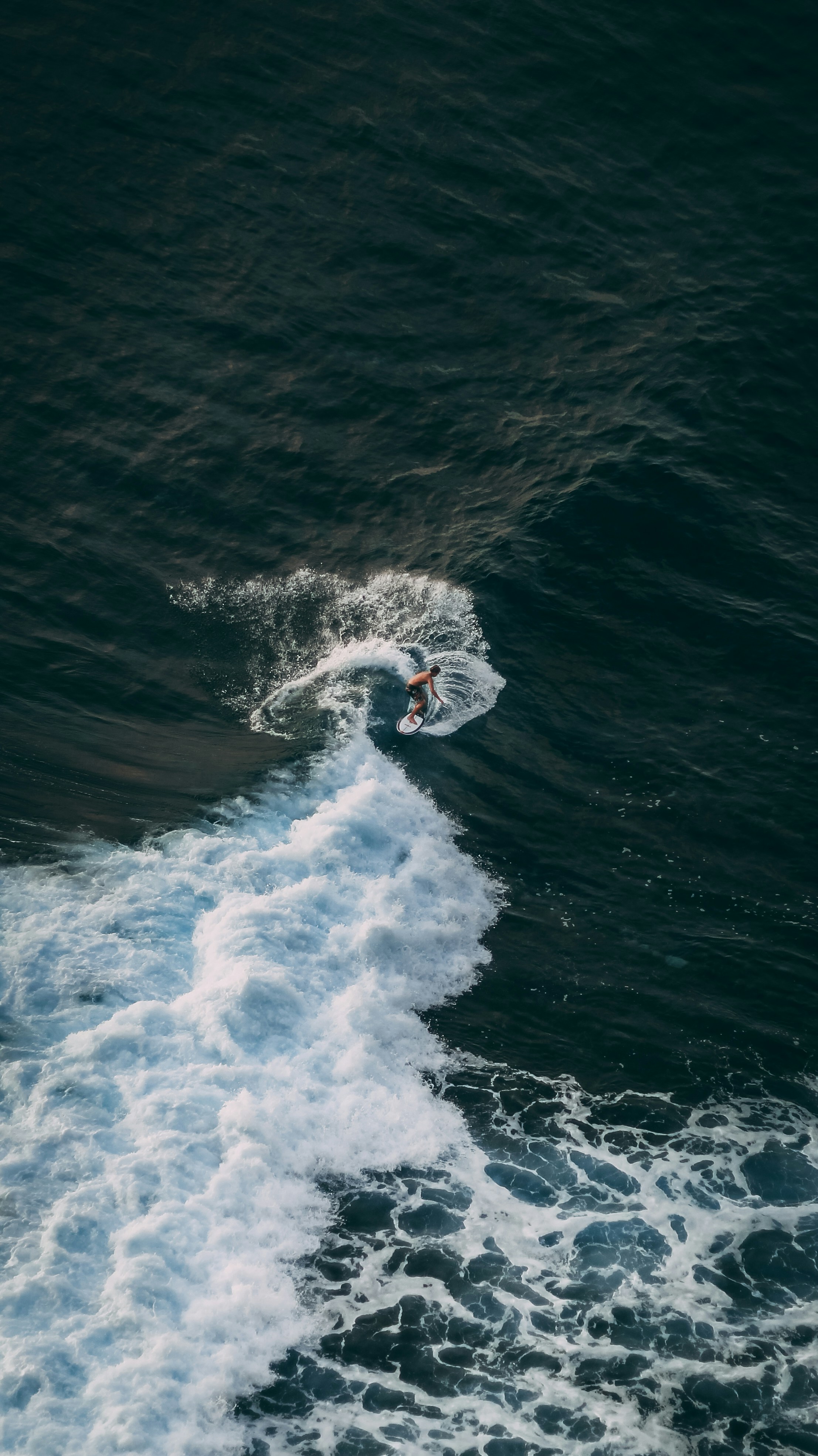Choosing the Right Surfboard for Your Surfing Level
The wrong surfboard won’t just slow your progress – it can trap you in bad habits.
The right one will match your current surfing level (where and how you take off) and help you unlock more of the wave’s energy.
Here’s how to think about board choice through the lens of both a shaper and a surf coach.
1. Level One – Learning to Stand and Balance (5–10% of Wave Energy)
If you’re taking off on the shoulder to avoid steep drops, you’re only using a fraction of the wave.
The goal here is simple: catch waves, stand up, balance.
Best board:
A long, wide, thick soft-top with flat, thick rails.
– High stability for wobbly pop-ups
– Extra volume so the wave “catches you”
– Unresponsive to bad technique (so you can still ride without falling)
Limitation:
Turns are limited to pivoting off the tail – leaning or twisting won’t do much.
2. Level Two – Steeper Takeoffs, Top-to-Bottom Surfing (10–40% of Wave Energy)
When you start taking off closer to the pocket, you can surf more up and down the face.
Best board:
A slightly shorter hard-top with a wide nose and more rounded rails.
– Still stable, but smoother turns than a soft-top
– Allows basic direction changes and trim along the wave
– Narrower rail engages more easily than thick soft-top rails
Limitation:
Wide nose can catch in steeper, hollower waves and limit tight turns.
3. Level Three – Generating Speed and Lateral Turns (40–60% of Wave Energy)
You’re confident on steeper sections and can make it to the shoulder, starting to link turns.
Best board:
A board with a pulled-in nose and round tail.
– Looser feel for easier maneuverability
– Less catch point in steeper sections
– Encourages trimming and initiating bottom turns
Limitation:
Requires you to stop pivoting and start twisting and leaning to turn — old habits can hold you back.
4. Level Four – Critical Takeoffs and Full Wave Use (60–100% of Wave Energy)
This is where advanced surfers live — taking off deep and using the whole wave.
Board choice now becomes about refining performance for specific wave types and personal style.
Key Takeaways
- Match your board to your current level – not the one you wish you were surfing
- Downsizing too soon can stall progress; staying on an oversized board too long can cement bad habits
- Progression is about shifting from pivot turns to rail-to-rail surfing, and from flat lines to top-to-bottom movement
How TRAX Helps You Know When to Change Boards
TRAX tracks:
– Where you take off on the wave
– How much rail you’re engaging in turns
– Whether you’re pivoting or leaning
– The lines you’re actually drawing on the wave face
By comparing sessions, you’ll see if you’re ready to downsize – or if your current board still has room to help you grow.
Related Reading:
→ What board should you actually be riding? — Volume and length aren’t the full story
→ Why you’re still surfing from your back foot — Board choice can hide – or expose – this habit
→ How waves really work — Understanding energy will change how you choose equipment








